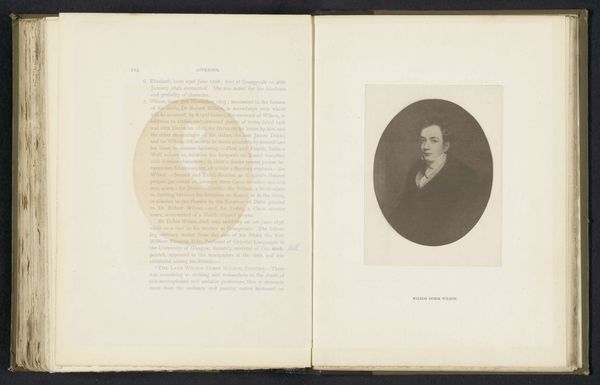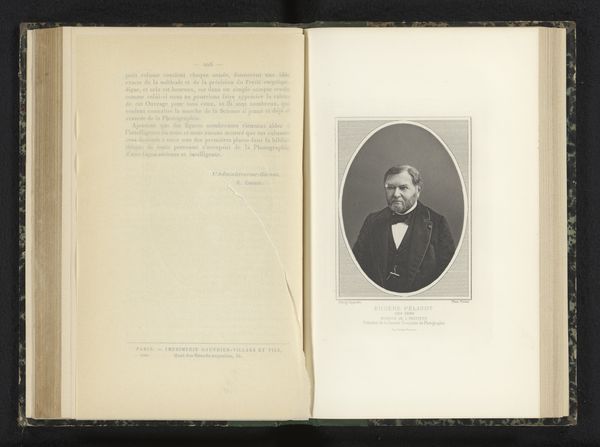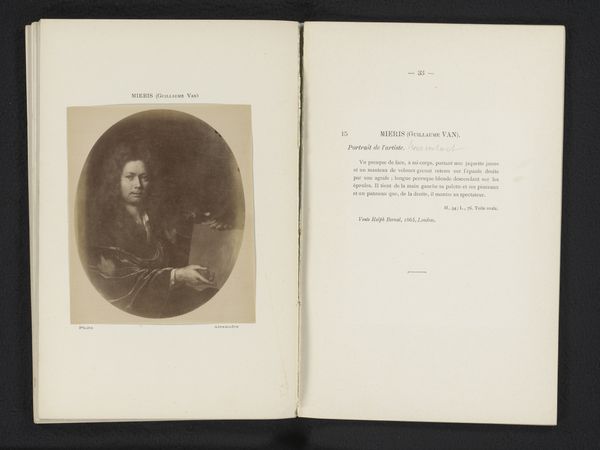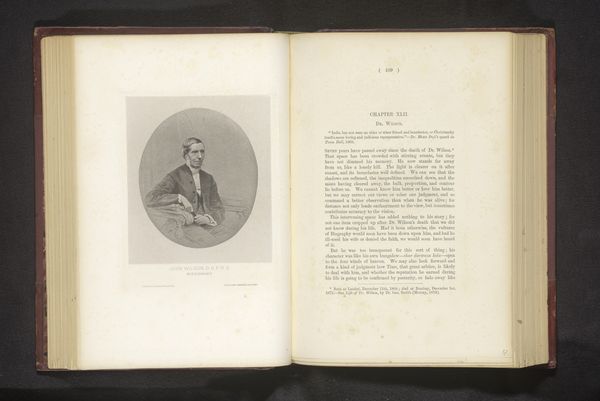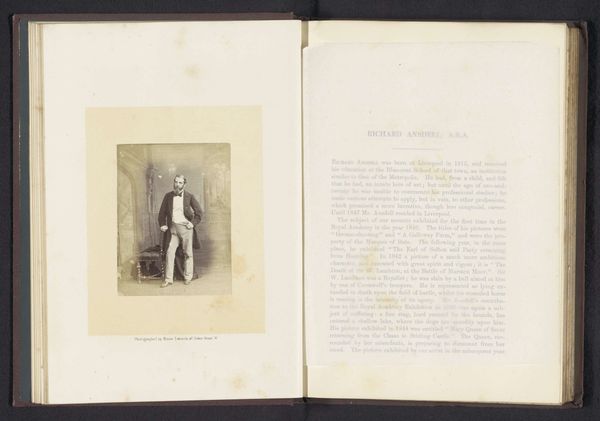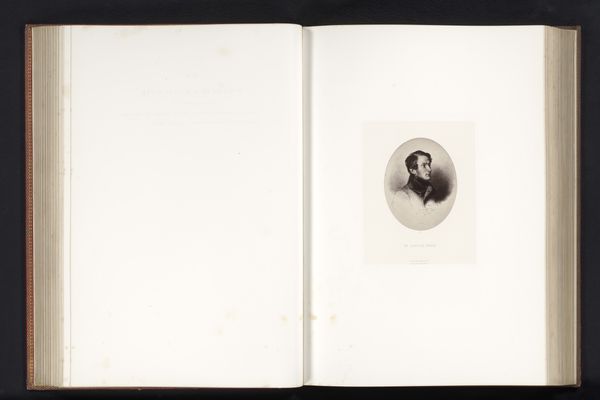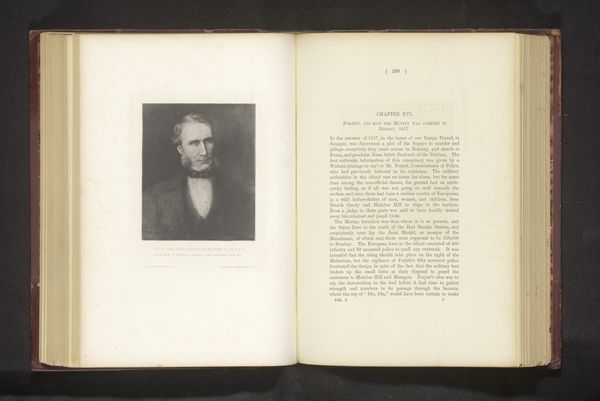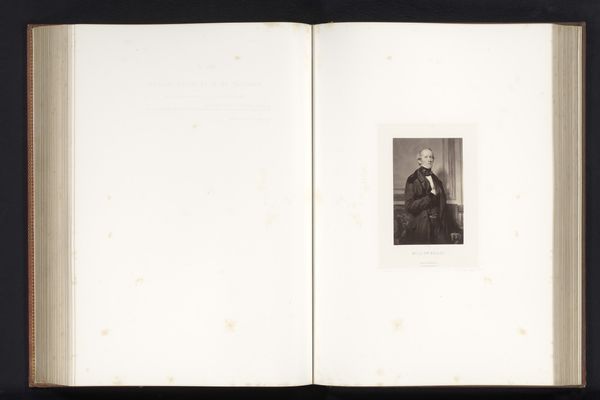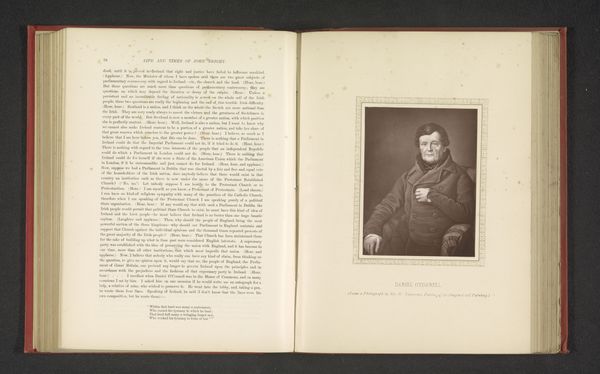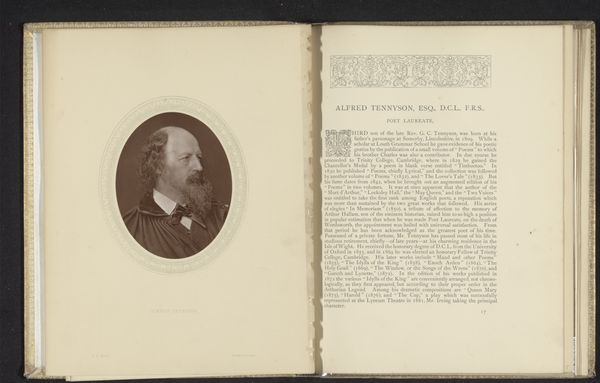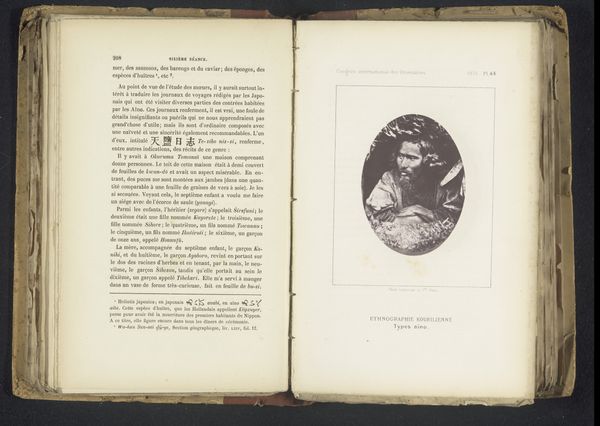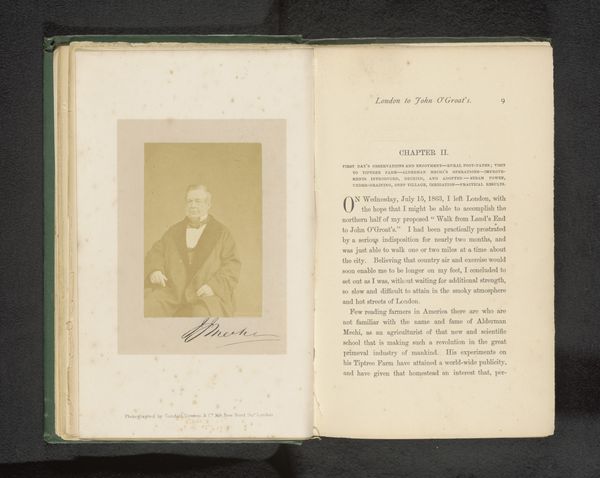
Fotoreproductie van een prent naar een zelfportret door Bartolomé Esteban Murillo before 1860
0:00
0:00
#
portrait
#
aged paper
#
homemade paper
#
pale palette
#
parchment
#
old engraving style
#
personal journal design
#
personal sketchbook
#
thick font
#
golden font
#
historical font
Dimensions: height 178 mm, width 138 mm
Copyright: Rijks Museum: Open Domain
Curator: Here we have before us a photogravure from before 1860, showing an image "after" a self-portrait by Bartolomé Esteban Murillo. Its earth tones really give it the feeling of an artifact. Editor: My initial impression is one of solemnity, there's a gentle wistfulness in his gaze and in the monochromatic palette. It speaks of an era long past, invoking notions of historical portraiture and the gravity associated with the genre. Curator: Note how the oval frame in the photographic image actually cuts into a faux classical frieze, perhaps invoking the tradition of the sculpted bust. The image is built up with short, clipped lines, and the use of light and shade give it a convincing illusion of three-dimensionality. Editor: Absolutely, the oval is almost a symbol for a captured memory, a common motif we see repeatedly used across history. The pose, the downturned eyes, they trigger thoughts about mortality, memory and self-reflection. It makes me wonder, what did portraits mean to individuals and society at that time? Curator: And what does it mean in *this* photographic reproduction of a painting, with its specific techniques? Note the plate marks, which lend the image a sense of materiality; the paper texture is itself a key element. It speaks to how images are transformed across eras. Editor: You're right; I see now it's a visual artifact layering representations of different temporalities! In many cultures, likenesses contain pieces of the individual depicted. How might these reproductive processes further refract one's spirit? The slight fading and warmth might evoke the idea of aging, lending a patina to Murillo’s likeness across time. Curator: Precisely! And, for me, the structure reveals an implicit meditation on the mechanics of historical remembrance and the physical life of art. Editor: Yes, by layering the image in the oval frame with different paper textures and fonts, we can extract powerful narratives about history, memory and individual identity that the piece presents to viewers. Curator: Indeed; it offers an intriguing demonstration of an artwork and how it transforms over time and processes. Editor: It certainly deepens our engagement with historical narratives.
Comments
No comments
Be the first to comment and join the conversation on the ultimate creative platform.
